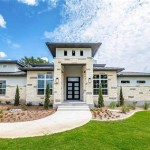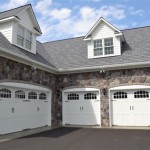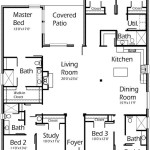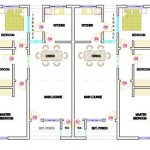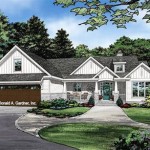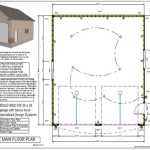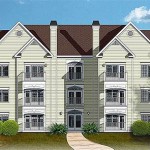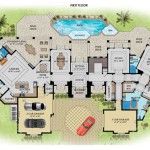Craftsman Cottage Style House Plans: A Detailed Exploration
Craftsman cottage style house plans represent a harmonious blend of two popular architectural movements, the Arts and Crafts movement and the quintessential charm of a cottage. This architectural style, characterized by its emphasis on handcrafted details, natural materials, and intimate spaces, offers a unique appeal for homeowners seeking a cozy and aesthetically pleasing residence. This article will explore the distinctive features, historical influences, and key considerations associated with Craftsman cottage style house plans.
Key Features of Craftsman Cottage Architecture
Craftsman cottage style houses embody a set of defining elements that contribute to their characteristic look and functionality. These features are deeply rooted in the Arts and Crafts philosophy, which valued simplicity, functionality, and the beauty of natural materials. Understanding these key traits is crucial for appreciating the design principles behind these homes.
One of the most prominent features is the low-pitched roof, typically with wide, overhanging eaves. These eaves are often supported by exposed rafters or decorative brackets, showcasing the structural elements of the roof. The roof design not only provides shade and protection from the elements but also contributes significantly to the overall visual appeal of the house. The presence of dormers, small structures projecting from the roof, is also common, adding both light and architectural interest to the attic space.
Porches are integral to the Craftsman cottage style. These are often full-width or wrap-around, providing ample outdoor living space. Thick, tapered columns, frequently made of wood or stone, support the porch roof, adding to the home's solid and grounded appearance. The porch serves as a transition space between the interior and exterior, encouraging a connection with the surrounding landscape.
Natural materials play a significant role in Craftsman cottage design. Wood, stone, and brick are commonly used for both the exterior and interior of the house. Wood siding, often in the form of clapboard or shingles, is a popular choice for the exterior walls. Stone foundations and chimneys add a sense of permanence and connection to the earth. Inside, wood trim, including wainscoting, built-in cabinets, and exposed beams, contributes to the warm and inviting atmosphere.
Windows in Craftsman cottage homes are typically multi-paned, often featuring a distinctive grid pattern in the upper sash. These windows allow for ample natural light while maintaining a sense of privacy. The use of stained glass windows as accent pieces is also common, adding a touch of artistry and color to the interior space. The window placement is carefully considered to maximize natural light and ventilation throughout the house.
Interior layouts in Craftsman cottages tend to be open and functional, emphasizing comfortable living spaces. The floor plans often feature a central living room or great room that serves as the heart of the home. Kitchens are typically designed to be both practical and aesthetically pleasing, with features such as built-in cabinets, farmhouse sinks, and ample counter space. Fireplaces, often clad in stone or brick, are common focal points in the living room, providing warmth and ambiance.
Historical Influences and Evolution
The Craftsman cottage style is a product of several historical and cultural influences. Understanding these influences provides context for the design principles and aesthetic values that define this architectural style. The Arts and Crafts movement, which arose in the late 19th century as a reaction against the mass-produced, ornate designs of the Victorian era, played a pivotal role in shaping the Craftsman aesthetic.
The Arts and Crafts movement championed handcrafted goods, simple designs, and the use of natural materials. This philosophy is evident in the Craftsman cottage style's emphasis on handcrafted details, such as exposed rafters, built-in cabinets, and custom woodwork. The movement promoted the idea that architecture and design should be honest, functional, and reflective of the natural world.
The bungalow, a type of house that originated in India and was later popularized in California, also influenced the Craftsman cottage style. Bungalows are typically small, single-story homes with low-pitched roofs and wide eaves. The compact size and simple design of the bungalow resonated with the Arts and Crafts ideals of simplicity and affordability. The Craftsman cottage style can be seen as a refined and more detailed version of the bungalow, incorporating elements of both architectural traditions.
The work of architects such as Gustav Stickley and the Greene and Greene brothers further shaped the Craftsman style. Stickley's magazine, *The Craftsman*, promoted the Arts and Crafts philosophy and featured house plans that embodied these principles. The Greene and Greene brothers, known for their elaborate and meticulously crafted bungalows in California, exemplified the highest ideals of the Craftsman movement. Their designs showcased the beauty of natural materials and the importance of handcrafted details, setting a standard for Craftsman architecture.
Over time, the Craftsman cottage style has evolved and adapted to changing tastes and lifestyles. While the core principles of the style remain the same, modern Craftsman cottages often incorporate contemporary features, such as open floor plans, energy-efficient materials, and updated appliances. The style has also been adapted to different climates and regions, with variations in materials and design to suit local conditions. Despite these adaptations, the essential character of the Craftsman cottage—its warmth, simplicity, and connection to nature—remains intact.
Considerations for Choosing and Adapting Craftsman Cottage House Plans
Selecting or adapting Craftsman cottage style house plans requires careful consideration of several factors, including lifestyle, budget, site conditions, and desired features. A thorough understanding of these considerations will help ensure that the final design meets the homeowner's needs and preferences while staying true to the architectural integrity of the Craftsman cottage style.
The size and layout of the house should be carefully considered to accommodate the homeowner's lifestyle and family size. Craftsman cottages are typically smaller than other types of houses, making them well-suited for individuals, couples, or small families. However, the interior layout can be customized to maximize space and functionality. Open floor plans can create a sense of spaciousness, while built-in cabinets and storage solutions can help to minimize clutter.
Budget is another important factor to consider when choosing or adapting Craftsman cottage house plans. The cost of construction can vary widely depending on the materials used, the complexity of the design, and the location of the project. Natural materials, such as wood and stone, can be more expensive than synthetic alternatives. Handcrafted details, such as custom woodwork and stained glass windows, can also add to the overall cost. It is essential to establish a realistic budget and prioritize features accordingly.
Site conditions, including topography, climate, and orientation, should also be taken into account. The design of the house should be adapted to the specific characteristics of the site. For example, a house built on a sloped lot may require a different foundation design than a house built on a flat lot. The orientation of the house should be optimized to maximize sunlight and ventilation. In hot climates, features such as wide eaves and porches can help to shade the house and reduce energy consumption. In cold climates, features such as well-insulated walls and windows can help to conserve heat.
Desired features, such as a fireplace, a porch, or a garden, should be incorporated into the design of the house. These features should be integrated seamlessly into the overall aesthetic of the Craftsman cottage style. For example, a fireplace can be clad in stone or brick to complement the natural materials used throughout the house. A porch can be designed to be both functional and aesthetically pleasing, with features such as tapered columns and a comfortable seating area. A garden can be designed to complement the house, with natural landscaping and native plants.
Adapting existing Craftsman cottage house plans requires a sensitive approach that respects the architectural integrity of the style. Changes should be made in a way that is consistent with the original design principles and aesthetic values. For example, adding a room to an existing Craftsman cottage should be done in a way that maintains the low-pitched roofline and the use of natural materials. Updating the interior of a Craftsman cottage should be done in a way that preserves the original character of the house while incorporating modern amenities.

Traditional Style With 3 Bed 2 Bath Car Garage House Plans Dream Craftsman

Small Craftsman Cottage Plan 94371 At Family Home Plans In Our Best Ing Floor Collection Style House

Craftsman Style House Plan 3 Beds 2 Baths 1421 Sq Ft 120 174 Houseplans Com
:max_bytes(150000):strip_icc()/SL-1873_FCP-8cf5801247c34df0b8bd839eeea78d4d.jpg?strip=all)
20 Craftsman Style House Plans We Can T Get Enough Of

Craftsman Cottage House Plan 117 1102 4 Bedrm 2482 Sq Ft Home

1 Story Modern Cottage Style House Plan Spaulding Craftsman Plans Farmhouse

Craftsman Style Home Plans

Plan 65870 Craftsman Cottage With Basement Option Bonus

Flexibile Cottage Craftsman Style House Plan 2138 Vida De La Confiaa

Pin By Sun N Wi On Old Homes Turn Of The Century Craftsman House Plans Cottage

